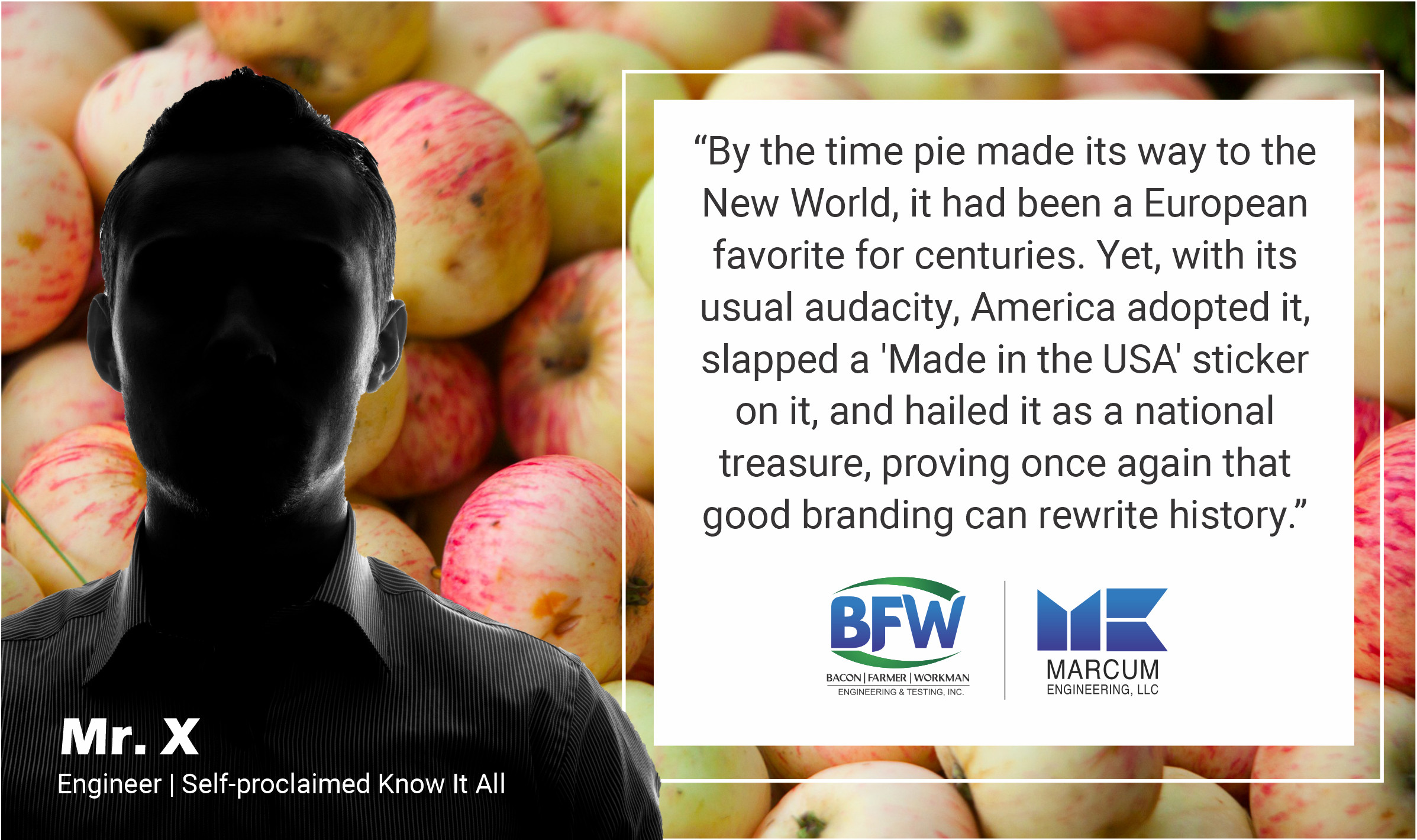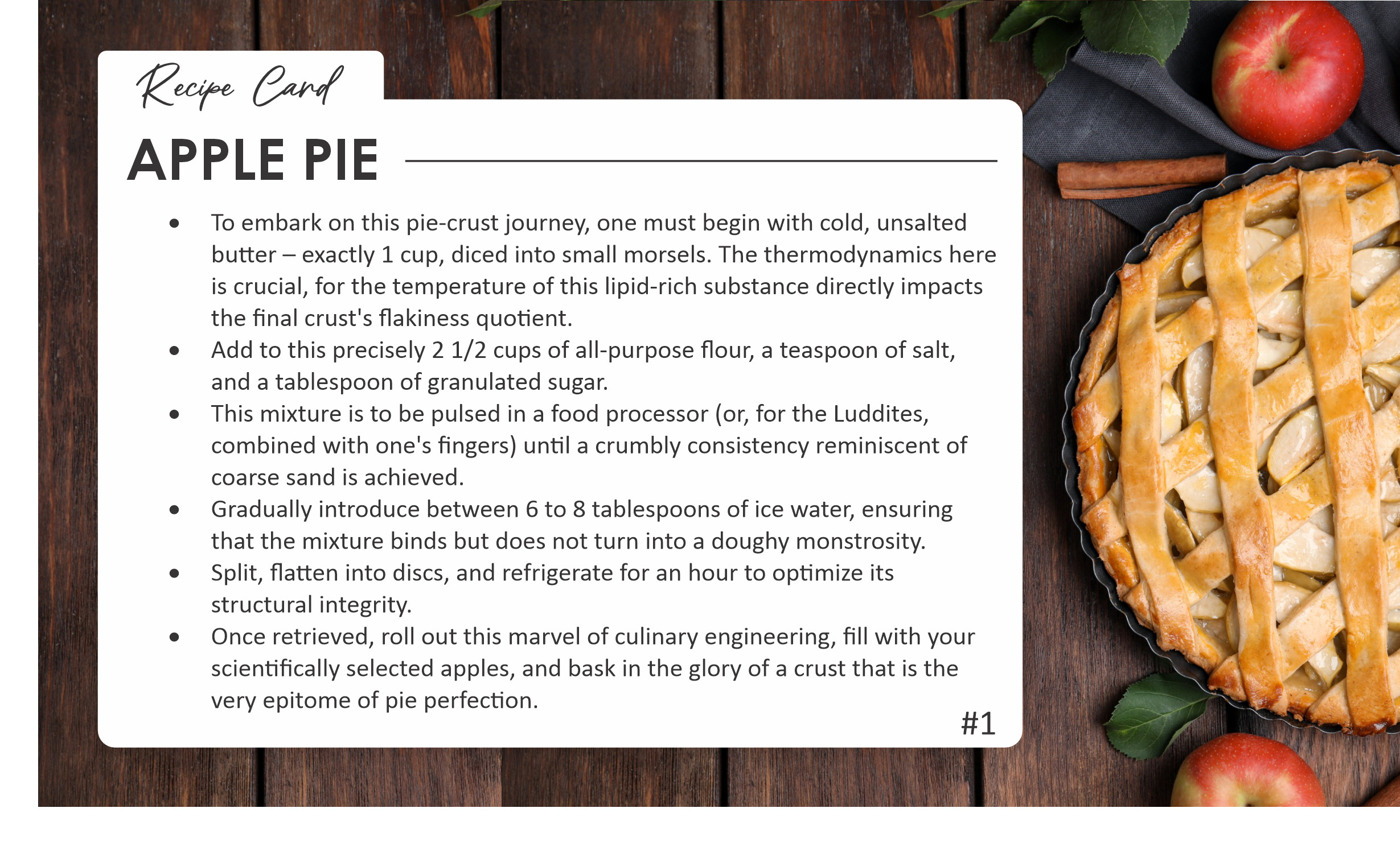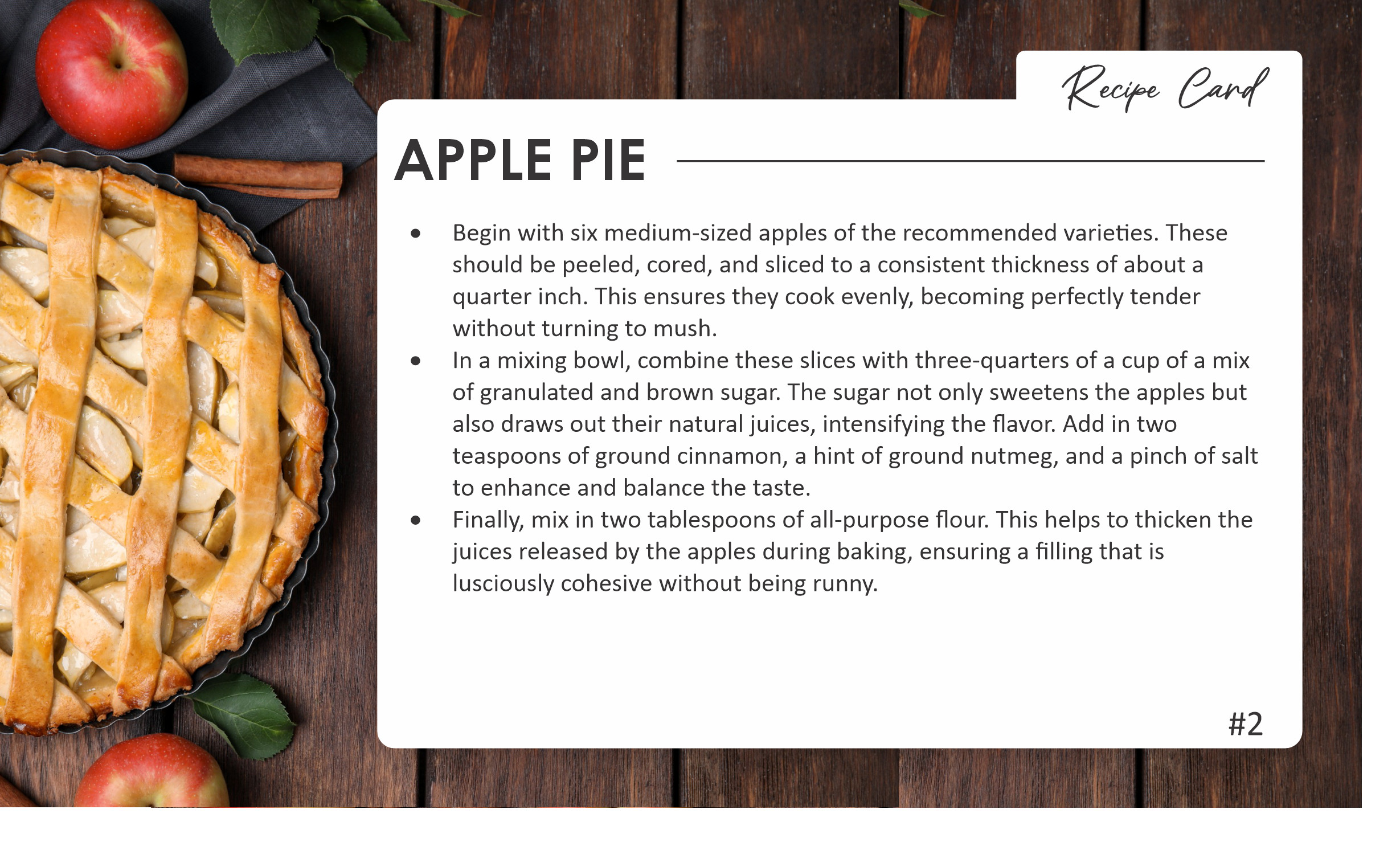As you might know, we’ve accepted our anonymous engineer, informally known as “Mr. X” for all his follies and have grown quite concerned when months pass without a peep from him. We’re happy to say, in his usual topical fashion, our mysterious genius has once again chimed in, this time to offer up some pie-making tips ahead of Thanksgiving.
As American as Apple Pie
Greetings everyone. You’ve heard the phrase “As American as Apple Pie”. You’ve probably said it out loud. Yet, in the grand tapestry of culinary deceit, few tales are as deliciously ironic as that of apple pie. Touted as the embodiment of Americana, its roots are about as American as a kangaroo sipping tea at the Eiffel Tower. In truth, the origins of the apple pie lie deep in the annals of European history, from the apple orchards of ancient Greece to the medieval kitchens of England.
By the time pie made its way to the New World, it had been a European favorite for centuries. Yet, with its usual audacity, America adopted it, slapped a ‘Made in the USA’ sticker on it, and hailed it as a national treasure, proving once again that good branding can rewrite history.

Or, maybe, just maybe, we did something uniquely American. Which is to say, we take an idea from across the sea, make it our own, and dare I even say, improve upon it? As an engineer, I understand the logical fallacy of “don’t reinvent the wheel.” If we stick to the first ideation of a concept, then we’re stopping well short of the unlimited variations that improve the concept and give us valuable data from the successes and failures along the way.
Not Just Any Old Apple
Specialization is an important concept in engineering. You wouldn’t ask a structural engineer to do soil testing. You also wouldn’t use a wrench to hammer a nail. So, too, should you be selective in choosing your apples for an apple pie. Not all apples are destined to become apple pies.
That brings us to the quintessential quandary of the pie-making elite: which apple cultivars to utilize for that sacrosanct slice of Americana? Now, if we were to approach this conundrum from an engineering perspective — and why wouldn’t we? — we must first consider the desired material properties of the end product. One would be remiss to overlook factors like compressive strength, tensile resilience, and moisture retention, all while optimizing for gustatory pleasure. It’s no mere child’s play.
The consensus among pie-technicians (a very serious discipline) often skews towards the ‘Granny Smith’, renowned for its high pectin content and robust cellular integrity, ensuring minimal deformation under thermal stress. In tandem, ‘Honeycrisp’ and ‘Braeburn’ provide a nuanced flavor profile while maintaining their geometric stability in the high-heat environment of the oven. However, to achieve a perfect balance of saccharide distribution and tartness, one might consider a strategic blend of these varietals. And always remember: in the grand mechanics of pie construction, choosing the right apple is as pivotal as selecting the right bolt for a suspension bridge. It’s all engineering, after all.
Go Homemade, or Go Home
The pie crust; that foundational framework upon which the architectural masterpiece of an apple pie is constructed. It is not merely an afterthought, but the very substrate that defines the boundaries of pie-dom. A true connoisseur knows that a subpar crust is akin to constructing a skyscraper on a foundation of marshmallows, a travesty in the hallowed halls of dessert engineering.

Getting to the Heart of the Matter
The filling is where the magic truly happens in an apple pie. It’s the soul of the dessert, capturing the essence of the chosen apples and pairing them with complementary flavors to elevate the overall experience.

After mixing, let the apple mixture sit for about ten minutes. This allows the flavors to meld and ensures that the sugar begins its work on the apple slices. Once ready, it can be poured into our prepared pie crust, and baked at 450°F for 20 minutes, then reduce the oven temperature to 375°F and bake for 40 minutes more, until you see the filling bubbling inside the pie. At its heart, a good filling captures the essence of the apples and marries them harmoniously with the other ingredients.
As Easy as Pie
Another adage and another half-truth. There is no ceiling to the concept of apple pie, neither is there one in engineering. At their core, both engineering and apple pie-making hinge on a balance of foundational knowledge and creative iteration. Just as engineers rely on blueprints and quality materials to ensure structural integrity, bakers select the best ingredients to achieve a perfect pie. The journey of refining, whether it’s tweaking a design or adjusting a recipe based on feedback, showcases the essential blend of precision and creativity in both fields. In essence, a well-crafted bridge and a delectable apple pie both stand as testaments to the meticulous art of their creators.

Recent Comments